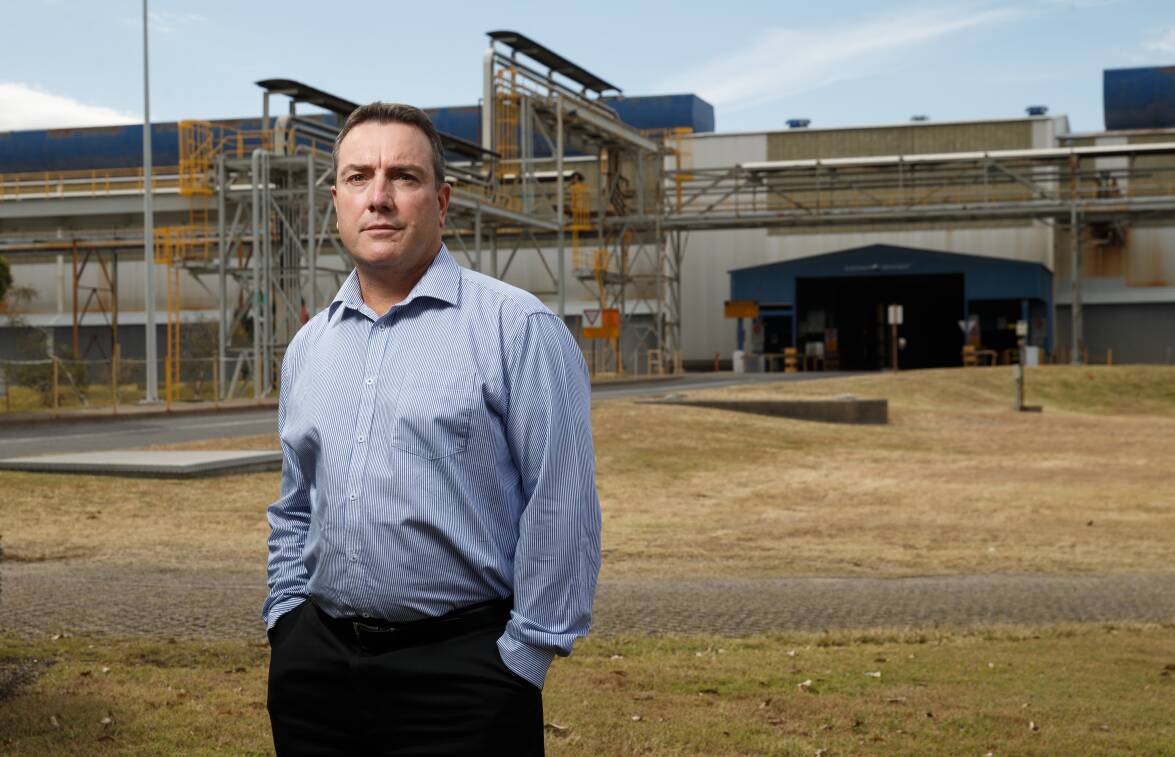
Labor's plan to cut emissions from the nation's most fossil fuel-intensive industries has provoked a Groundhog Day talkfest about jobs and carbon taxes, but Tomago Aluminium boss Matt Howell says it is unclear what impact, if any, the policy will have on his company.
Tomago is one of 215 businesses covered by an existing government scheme known as the Safeguard Mechanism which aims to keep a cap on emissions on the way to net zero by 2050.
Separating rhetoric from reality is often difficult in an election campaign, but what seems clear is that Labor's Powering Australia plan, published last year, includes an attempt to incrementally cut emissions allowed under the Safeguard Mechanism to help reach the party's 43 per cent national greenhouse gas reduction goal by 2030.
Labor says the scheme's existing rules are not working and have allowed a rise in emissions. Its scheme is based on recommendations last year from the Business Council of Australia, which called for an "enhanced and expanded role" for the Safeguard Mechanism.
The 215 companies include 14 Hunter coalmines, Tomago Aluminium and the Orica ammonia plant on Kooragang Island.
The Coalition says Labor's plan to beef up the scheme is a "carbon tax" and will put 10,000 jobs at risk. Labor, and Singleton mayor Sue Moore, say this is scaremongering.
What is not clear in the Labor plan is just how many tonnes of carbon dioxide emissions each of the companies will be asked to cut, and when, and how much it will cost them in carbon credits if they don't.
Labor says the Clean Energy Regulator (CER), which oversees the Safeguard Mechanism, will consult each business before setting new emissions baselines on a case-by-case basis.
It says no "trade-exposed" company will be put at a disadvantage against international competitors.
Labor says more than two thirds of the companies covered by the Safeguard Mechanism already have emissions goals in line with, if not exceeding, net zero by 2050.
Mr Howell said he could not draw any conclusions from the published Labor plan and would "look forward to seeing the detail".
Tomago, the nation's biggest electricity consumer, announced last year that it aimed to switch to 100 per cent firmed renewable power by the time its contract with AGL expires in 2028.
"It's not going to be easy, but we have time and I'm confident we'll find a way," Mr Howell said.
Tomago produces the equivalent of 8.5 million tonnes of carbon emissions a year due to the enormous electricity consumption required to smelt aluminium.
Converting to green power would cut the smelter's emissions to virtually zero and take it off the Safeguard Mechanism list.
Similarly, Orica is installing new technology at Kooragang this year which it says will reduce the site's emissions by 48 per cent.
The project has received $13 million from the state government and a $24 million loan from the federal Clean Energy Finance Corporation. It has also received CER approval to generate tradeable carbon credits.
Orica said on Wednesday that it did not comment on policy proposals during election campaigns but was "committed to working constructively with governments on legislation that seeks to sustainably transition the economy".
"Orica has reduced its operational greenhouse gas emissions by 13 per cent from 2019 levels, established a target to reduce scope 1 and 2 operational emissions by at least 40 per cent by 2030 and has also established an ambition to achieve net zero emissions by 2050," a spokesperson said.
Any plan to cut emissions will present varying challenges for different industries. Labor says the CER will tailor targets for different emitters, but the coal industry will not be exempt.
Labor climate spokesman Chris Bowen said last weekend that, under the revised scheme, mining companies would have to pay for carbon credits if they exceeded the new emissions targets.
The mines' emissions produced during production are counted in the scheme, but not those generated when their coal is burned overseas.
Carbon credits are now priced at $24 per tonne of emissions. The coal industry produces 33 million tonnes of emissions covered by the Safeguard Mechanism every year.
Eliminating all of this would cost about $792 million at current prices, but Labor says the baselines will fall "gradually".
Modelling for Labor by RepuTex allowed for a 5 million-tonne reduction across all sectors each year, reaching net zero by 2050.
Whitehaven Coal chief executive Paul Flynn said on Tuesday that the Labor plan looked like a carbon tax.
NSW Minerals Council chief executive Stephen Galilee was scathing about the lack of detail in the Labor plan when interviewed on Sky News last weekend.
He told the Newcastle Herald on Wednesday that demand for Hunter coal had remained at near-record levels for nearly a decade.
"Any policies that jeopardise the immense export opportunities for our local resource sector put thousands of jobs and billions in economic activity at risk," he said.
Shortland MP and shadow minister assisting for climate change Pat Conroy said Labor's plan was backed by the Business Council of Australia, Australian Industry Group, Australian Chamber of Commerce and Industry and National Farmers Federation.







